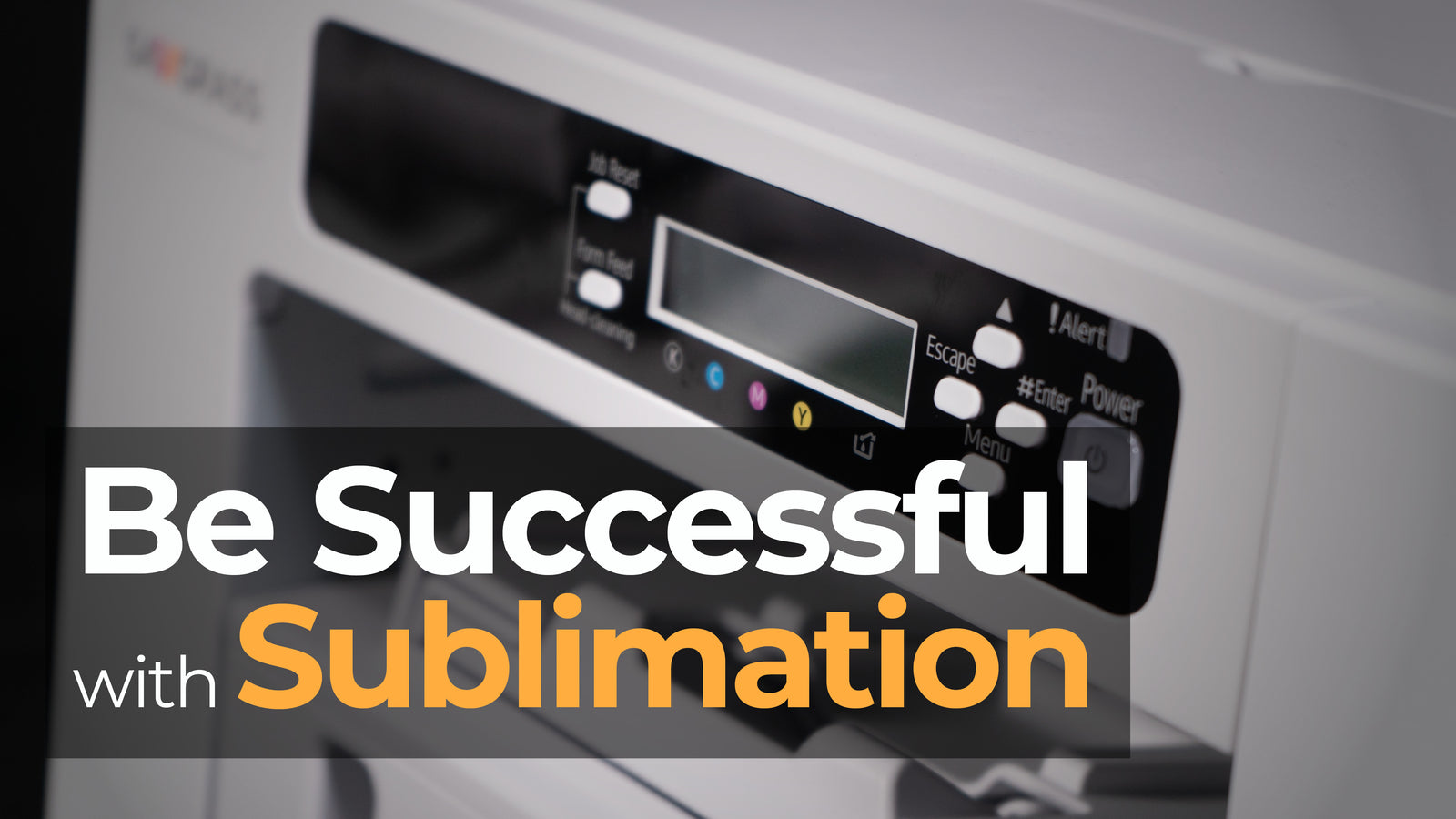In the world of customization, sublimation is hot! Literally. It involves special heat activated dyes being transferred in the process of pressing sublimation transfers onto poly-based items. Things like polyester apparel, poly-coated coffee mugs, photo panels, awards plaques, and many other blanks. So here are 3 important tips on how to be successful in sublimation.
Equip yourself with the best tools and supplies for sublimation.
When it comes to sublimation printers, Sawgrass desktop printers like the SG500 and SG1000 are our recommended options. By holding 8.5" x 14" paper maximum, the Sawgrass SG500 is capable of printing transfers big enough for the majority of sublimation blanks. However, if you intend on tackling anything slightly bigger, the SG1000 can hold 11" x 17" paper by default, but you do have the option of using a dedicated bypass tray which expands to 13" x 19" paper — suited for some of the largest items.
If we’re talking about printers, we of course also need to talk about ink and paper. For Sawgrass printer inks, Sublijet-UHD is best, given that they’re the official Sawgrass inks. Expect excellent colors and contrast from transfers printed with them, alongside permanent durability lasting as long as the items sublimated with them. By default, Sublijet-UHD is available in CMYK cartridges made to fit both the SG500 and SG1000. Though for higher capacity inks on the SG1000, extended cartridges are available exclusively for that printer.
When it comes to paper, you can’t go wrong with Beaver Paper’s TexPrint DT. TexPrint DT comes in 2 versions: Heavy and Light. While both papers have been designed with specific sublimation inks in mind, they are safe to use on any sublimation printer regardless of ink type. But, that’s not to say there are no differences between DT Heavy and DT Light. For more details, be sure to watch our video linked below comparing the two papers printed through a Sawgrass printer.
When equipping yourself with a sublimation heat press, consider not only its size, but also the style. Heat presses come in two styles: clamshell and swing-away. Clamshell heat presses are more than enough for pressing most sublimation blanks, but for thicker items like picture frames, swing away machines can press such items with little to no hassle. After you decide on a style you can shop for a specific model of heat press.
Rely on a solid source of blanks
In deciding on what apparel to sublimate, the biggest factor to consider is if it's rich in polyester. White 100-percent polyester fabrics are well suited for sublimation, with such transfers applied onto them appearing at the best colors and overall quality your printer system can provide. For a more rustic look, poly-blend items with at least 50-percent polyester are also worth considering, especially if you’re going after softer or classic style apparel.
With the mass of hard sublimation blanks in the market, it’s a good practice to rely on a trusted source for them, especially if they offer notable brands. Fortunately, HeatPressNation.com has many popular blanks covered, including keychains from Unisub, photo panels from ChromaLuxe, tumblers from SubliCraft, Orca-coated coffee mugs, and plenty more. But before customizing any item, especially if they’re hard items limited to sublimation oven setups, it’s best to test them out first before deciding whether or not they’re viable for your purpose.
Cleanly press sublimation transfers without ghosting
This means you’ll need three more essential tools to help accomplish this: heat tape or adhesive spray, parchment paper, and pressing pillows. Heat tape is a practical way to attach sublimation transfers onto both soft and hard items. Though for soft items, adhesive spray is perfect as you can lightly spray it on your transfer, then simply attach it to your poly-rich item. Adhesive sprayed transfers will fully adhere to the item, omitting heat tape press marks entirely.
To keep your contents protected upon pressing, parchment paper sheets are crucial tools typically trimmed out of a roll, then placed below and above your prepared items. This is mainly to prevent the transfer’s outgassed dyes from reaching to the machine itself, also preventing excess dyes from migrating. Lastly, pressing pillows like the Sof-Fusion pillows can effectively reduce press marks for fabric items and apparel. While your polyester shirt may not need a pillow, sliding one inside before pressing your transfer can make a resulting difference as long as pressure isn’t too heavy.
So those are 3 important tips on how to be successful in sublimation. If you have any questions, feel free to reach out to us at heatpressnation.com/support.



2 comments
Good evening… I do decorations for parties Mose of the time sweet sixteen and wedding and I would like to add the shirts and gifts like mugs for gifts for guests which one will be right for me …. I was at store today and they use de hix Heat press machine….. you think this will be the best for me ?
I am starting off with just t-shirts for now with the sg500 and the 15×15 hpn craftpro. What other recommended products (cutter, transfer paper,…) should I purchase to start off fairly with?
I have the starter kit and I am looking forward to continue on. Thank you!